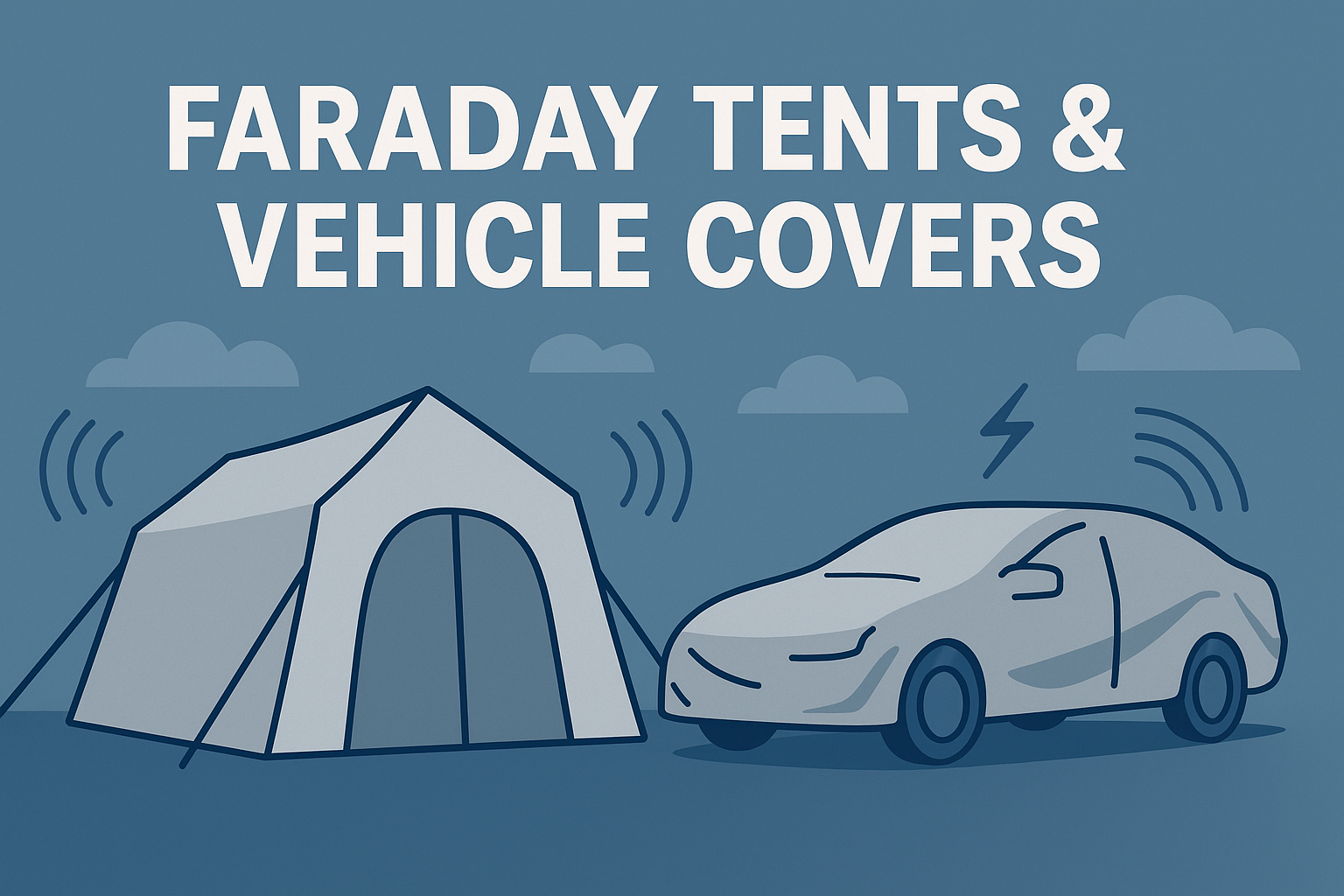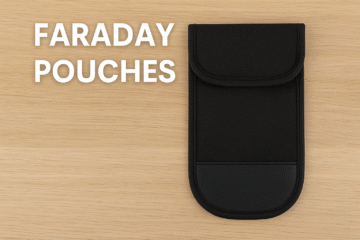(Simple EMF Meter Methods)
You’ve bought high-quality frequency blocking materials — maybe silver-thread curtains, an EMF canopy, or conductive wall paint — but how do you know they’re working?
Fortunately, you don’t need a laboratory to test performance. With a few simple tools and techniques, you can measure the effectiveness of frequency blocking fabrics and materials right at home.
This guide explains step-by-step how to use consumer EMF meters, interpret readings, and verify that your setup is truly reducing exposure.
🧭 Why Testing Matters
The market for EMF and frequency blocking products is booming — but not all products live up to their claims.
Some fabrics block only narrow frequency ranges; others lose conductivity with washing or aging. Testing helps you:
- Confirm your material’s real-world performance
- Identify leaks or gaps in coverage
- Optimize placement for maximum benefit
- Separate scientifically effective products from marketing hype
🖼️ Image prompt: Person holding an EMF meter beside a silver fabric sample and taking readings.
⚙️ Tools You’ll Need for Home Testing
You don’t need industrial equipment. The following tools work for most home users:
| Tool | Purpose | Recommended Examples |
|---|---|---|
| RF/EMF Meter | Measures radiofrequency and magnetic field intensity | Safe and Sound Pro II, Cornet ED88T |
| Conductivity Tester (Optional) | Checks grounding or surface conductivity of fabrics and paints | YShield Multimeter |
| Smartphone Analyzer App | For Wi-Fi and Bluetooth signal readings | “WiFi Analyzer” (Android), “Network Analyzer” (iOS) |
| Notebook or Spreadsheet | To log readings before and after shielding | Any manual log or Google Sheet |
🖼️ Image prompt: Flat lay of EMF meter, notepad, grounding clip, and fabric sample.
📶 Understanding What You’re Measuring
1. Frequency Types
- Low-Frequency (ELF): From wiring and appliances (50–60 Hz).
- High-Frequency (RF): From Wi-Fi, cell towers, Bluetooth (800 MHz–6 GHz).
Most frequency blocking fabrics are designed for RF shielding, not power-line ELF.
2. Measurement Units
Meters display readings in:
- µW/m² (microwatts per square meter): Power density of RF waves.
- V/m (volts per meter): Field strength (convertible to µW/m²).
For reference:
- Typical bedroom near Wi-Fi: 2,000–10,000 µW/m²
- Shielded bedroom with canopy: <100 µW/m²
(Electronics Notes: Shielding Effectiveness)
🧪 Step-by-Step: Testing Frequency Blocking Materials at Home
Step 1: Establish a Baseline
Before testing fabrics, measure your environment.
- Turn off unrelated devices (TVs, microwaves).
- Note readings for:
- Wi-Fi router area
- Bedside
- Near windows or walls facing cell towers
- Record average readings for 30–60 seconds.
🖼️ Image prompt: Person taking EMF readings near a window and jotting results in a notebook.
Step 2: Test the Material Directly
Hold your frequency blocking fabric between the meter and the signal source (like your router).
- Keep both about 12–18 inches apart.
- Move the fabric slowly to ensure coverage.
- Watch for reading drops on your meter.
Example Results:
| Setup | Reading (µW/m²) | Reduction |
|---|---|---|
| No fabric | 8,000 | — |
| SilverAffect Fabric | 120 | 98.5% |
| Carbon Fiber Fabric | 380 | 95% |
| Copper Mesh | 45 | 99.4% |
🖼️ Image prompt: EMF meter displaying high reading, then lower reading as silver fabric is placed in front.
Step 3: Test Installation Effectiveness
After applying materials (paint, curtain, or canopy), test again from the same location as your baseline.
- Measure through windows, walls, and under canopies.
- Take readings at multiple heights (bed level, standing height).
- Note both before and after averages.
Example – Bedroom Wall Test:
| Location | Before (µW/m²) | After (µW/m²) | % Reduction |
|---|---|---|---|
| Wall near tower | 6,500 | 230 | 96% |
| Ceiling | 2,800 | 180 | 93% |
| Bedside (after canopy) | 3,000 | 80 | 97% |
🖼️ Image prompt: Meter being held beside a grounded black-painted wall.
Step 4: Check Grounding
If you’re using conductive paint or fabric, grounding ensures static and electric charge safely dissipate.
Use a continuity or conductivity tester to confirm:
- Paint connects to the grounding plate.
- Fabric clips or cords show electrical continuity.
A reading under 5 ohms indicates proper grounding.
🖼️ Image prompt: Technician touching a grounding clip to a wall plate with a multimeter.
Step 5: Evaluate Real-World Function
Try simple practical checks:
- Wi-Fi Test: Does your phone lose connection when placed behind the material?
- Call Test: Does a phone call drop inside a canopy or shielded enclosure?
- Bluetooth Test: Does your speaker disconnect when shielded?
These help visualize the effectiveness for readers without meters.
🧰 Tips for Accurate Results
- Hold still: EMF meters react instantly — average your readings.
- Avoid reflections: Metal furniture or large appliances can distort numbers.
- Measure at night: Fewer external Wi-Fi sources reduce noise.
- Repeat tests over several days for consistency.
- Document everything — including time, position, and device activity.
🖼️ Image prompt: EMF readings recorded in notebook labeled “Pre-Shield” and “Post-Shield.”
⚡ Common Testing Mistakes to Avoid
| ❌ Mistake | ✅ Correct Approach |
|---|---|
| Testing too close to source (overload) | Stay 12–24 inches away |
| Using ungrounded fabrics | Always ground conductive materials |
| Comparing readings from different locations | Always test from same spot |
| Ignoring ambient fluctuations | Take averages over 30–60 seconds |
| Expecting “zero” EMF | Even effective shielding reduces, not eliminates signals |
🧮 Interpreting Results: What’s Good Performance?
| Attenuation (dB) | Approx. % Reduction | Typical Home Reading Result |
|---|---|---|
| 20 dB | 90% | Noticeable drop; minor improvement |
| 40 dB | 99% | Strong reduction; suitable for most uses |
| 60 dB | 99.9% | Professional-level attenuation |
| 80+ dB | 99.99% | Rare; industrial or lab-grade |
Example Consumer Result:
Before: 8,000 µW/m² (router wall)
After applying YShield paint: 180 µW/m²
Reduction: ~97.7% (~45 dB attenuation)
(Electronics Notes – Decibel Explained)
🧍 Testing Wearable or Portable Products
Frequency blocking scarves, blankets, or clothing can also be tested:
- Place your phone (with Wi-Fi ON) under the fabric.
- Watch your meter reading drop as you cover it.
- Check for consistent reduction when moving around the fabric.
Sample Results (Radia Smart EMF Scarf):
| Test | Reading (µW/m²) | Reduction |
|---|---|---|
| Uncovered | 4,200 | — |
| Covered | 260 | 93.8% |
🖼️ Image prompt: Person holding a scarf over a smartphone with an EMF meter nearby showing reading drop.
🧩 Documenting and Comparing Results
Keep a simple log for your home tests:
- Record baseline, material test, and post-installation readings.
- Include photos of your setup.
- Note environmental changes (new routers, moved furniture, etc.).
Over time, this data helps you track performance and detect degradation in frequency blocking materials.
🖼️ Image prompt: Notebook showing handwritten test results with “Before / After / Grounded” columns.
🔍 Troubleshooting Poor Results
If results aren’t matching expectations:
- Check gaps: Signals sneak through window edges or outlet plates.
- Inspect grounding: Loose or incorrect connections reduce performance.
- Test for reflections: Large metal surfaces nearby can create hotspots.
- Re-measure from multiple angles: RF can bounce unpredictably indoors.
If readings remain high, consider layering materials — e.g., fabric plus paint — for improved attenuation.
(Safe Living Technologies Grounding Guide)
🧠 Key Takeaways
- Testing your frequency blocking materials ensures they perform as claimed.
- Use consumer EMF meters for reliable home verification.
- Always test before and after installation from identical locations.
- Proper grounding and documentation improve accuracy.
- Expect reduction, not elimination — even 90–99% reduction is excellent.
With a few readings, you’ll turn your frequency blocking setup from “I hope it’s working” to “I know it’s effective.”
🖼️ Image prompt: Satisfied homeowner reviewing EMF readings with a thumbs-up beside grounded silver curtains.

